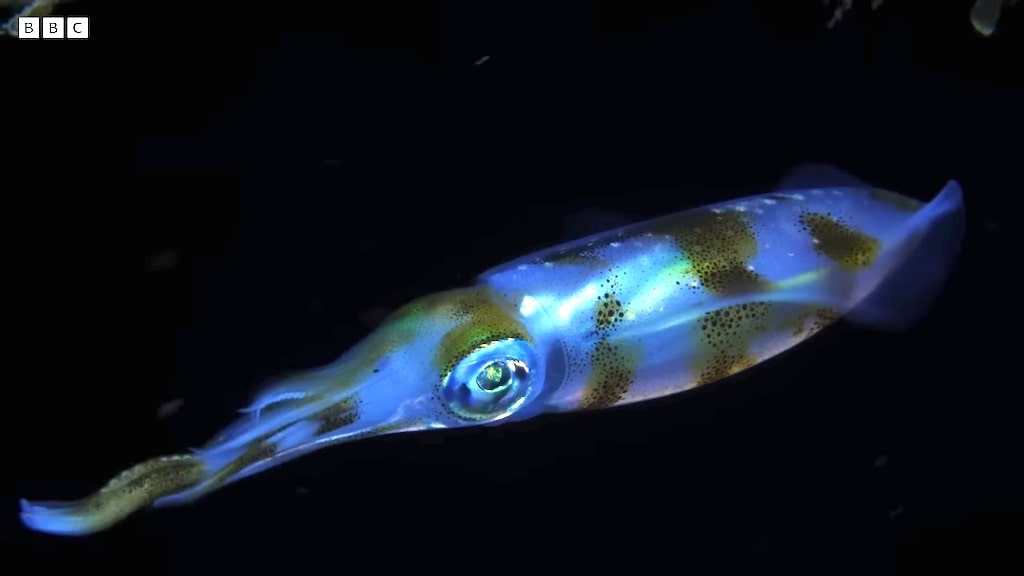How Deep Sea Humboldt Squid Communicate With Light
BBC Earth spoke with Ben Buford of Monterey Bay Aquarium Research Institute (MBARI) to learn more about how the deep sea Humboldt squid uses light to communicate with others, particularly those within their own group.
Living in groups is a huge adaptation for life in the open ocean, you know, where resources are very patchy. These squids may have to search for a long time before they find, say, a food resource. But for a group to work, you know, when you find that food resource, perhaps you need some way of conveying your intent or like what you’re doing in the moment that you’re feeding.
In addition to having chromatophores in their skin, this particular cephalopod species has photophores. This is a specific gland within their muscles that increases bioluminescence. The Humboldt squid has learned to control these photophores to create a visual language of sorts.
For the Humboldt squid embedded within their muscle tissue are hundreds and hundreds of these tiny little bioluminescent organs called photophores, like a firefly. That is a photophore that’s designed to project light out like a flashlight. Humboldt squid, on the other hand, they’re more designed just to radiate light in the tissue itself.







